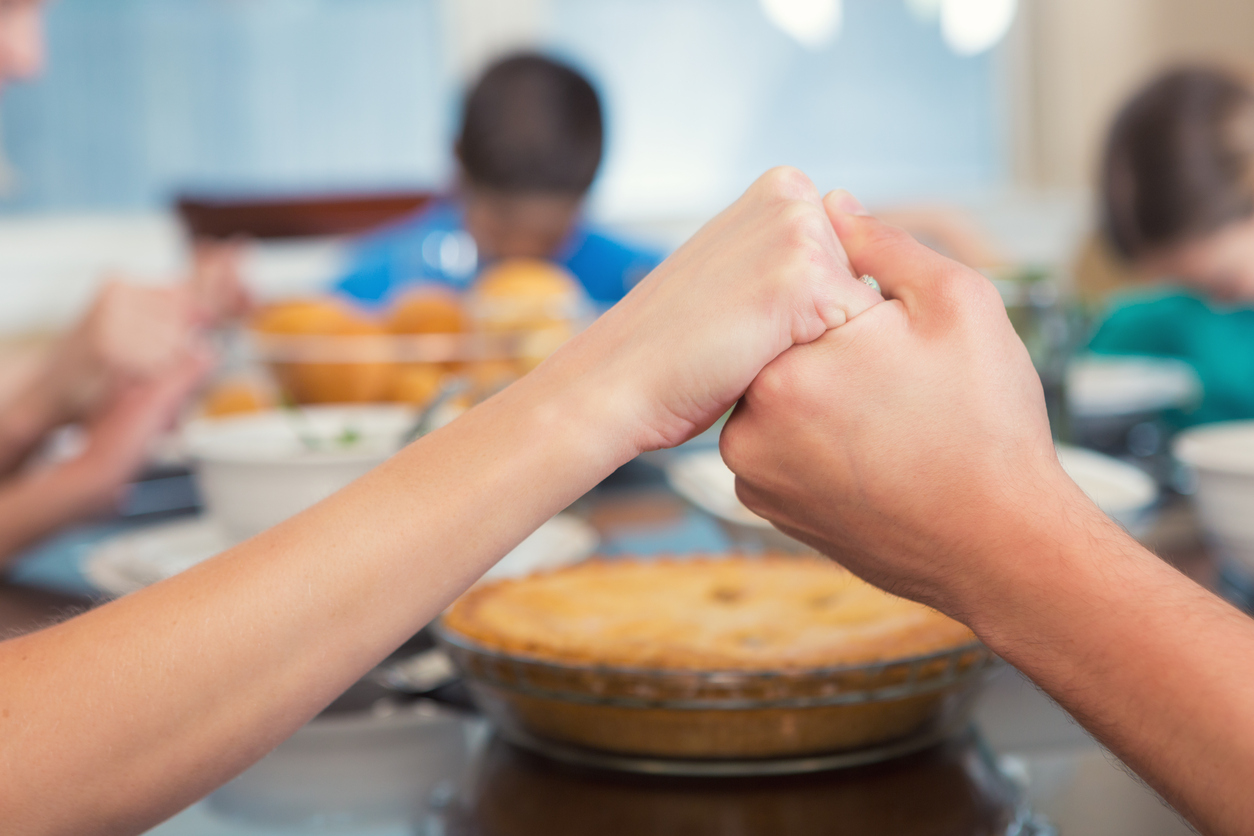
Thanksgiving will be celebrated in the United States next week, kicking off a month of holiday frenzy that includes Hanukkah and the Winter Solstice and culminates finally, for most Americans, in Christmas. The busyness and consumer focus often leave both children and parents feeling overwhelmed and unsatisfied, focused on acquiring more things but never feeling like it is enough, aching for a different experience of the holidays.
But there is another way. You can give your children a meaningful, joyous and peaceful holiday season. You can celebrate the start of the new year feeling more connected as a family. Mommy meltdowns and going into debt are completely optional.
How do you start? By feeling appreciative for all you have! That makes gratitude into a mindset, or a habit.
Here are 13 proven gratitude practices that will help you invent your own meaningful family gratitude traditions, for Thanksgiving and beyond.
- Have your family count blessings by listing things everyone is grateful for every night at dinner or bedtime. (In one study, middle-school students* were asked to count their blessings for two weeks by listing five things every day that they felt grateful for. The control group listed complaints about hassles in their lives. The kids who focused on blessings for just two weeks felt more gratitude, more life satisfaction, and more optimism. What's more, they were more positive in general, even several months later.)
- Record family blessings in a Family Gratitude Journal which you read back to the family on a regular basis. Research shows this retrains your mind to focus on the positive. Be specific in your appreciations to freshly focus your brain. For instance, instead of "I am grateful for my husband" notice that one day "I am grateful for my husband's patience when I get stressed" and another day "I am grateful for my husband's hard work in cleaning up the leaves outside."
- Gratitude Jar. Another effective practice is a gratitude jar. When anything lovely happens in your home, say to your children "I am so grateful for this! This goes in the gratitude jar!" which makes the moment more special to everyone, and helps children want to find or create more such moments. Just write down what happened on a slip of paper and add it to the jar. Then, as part of your holiday rituals, for instance at New Year's, find a good time to read all those slips of paper to your family and let the sheer enormity of your blessings sink in.
- Make it a practice to comment with appreciation on all the blessings you encounter as you go through life. Your children will follow suit. "What a beautiful day! I love it when the sun is shining."..... "I love the rain! Look how happy the plants are for the water."
- Look for books on gratitude at the library and online (used) and read them with your child. Talk about what gratitude means and what you're grateful for.
- Appreciation photos - Take a photo or two every week of something beautiful that you appreciate, share it with your kids, and talk about why you appreciate it. Tape them up somewhere in your house so that you'll be reminded often of your many blessings.
- Express your thanks through service. Volunteer together at a shelter that feeds hungry people. Make cards for our troops. Bake pies with your kids and take some to your local homeless shelter or fire station. Explain to your children that we are all interconnected and we benefit so much from the actions of others that we want to pass on those blessings to others whenever we can.
- Express gratitude to nature. Help your kids make peanut butter and seed-stuffed pinecones for the birds, or plant bulbs, or pick up trash at your local park.
- Help your kids write thank-you letters to mail or deliver in person “to someone who has done something really kind for you, but you never gave them the thanks they deserve." (Gratitude researcher Jeffrey Froh found that kids who did this have higher happiness levels than kids who didn't write the letters -- not just immediately, but even three and five months later.)
- Make a blessing tree and post it on the wall. On Thanksgiving, everyone writes things they're grateful for on construction paper leaves, and tapes them to the tree. If you save this and add to it every year, it will become an heirloom, as the children grow and the family constellation changes. You can also do this as a Blessing Book and keep adding pages.
- Blessing Tablecloth- Ask everyone to write 3 things they're grateful for, their name & the date on a plain white tablecloth using permanent markers. Repeat annually with the same cloth & your children will look forward to the tablecloth every year, even as teens.
- Written Appreciations. Ask your children to make large place cards with the name of each person at your Thanksgiving table. In the lead up to the meal, ask each person at your meal to write an unsigned entry inside everyone else's card--several words or a sentence describing a quality they appreciate about the other person.
- Shared Gratitude. During the meal, clink your glass, make a toast of gratitude that you all get to be together, and then go around the table, each person talking about something for which they feel gratitude. Even during the hard years, there is so much to be grateful for.
*Study by gratitude researcher Jeffrey Froh at Hofstra University.
"If we want to be happy, and to raise happy kids, we need to practice gratitude — deliberately, and consistently, or we may end up feeling more entitled than appreciative. When we feel entitled, we often stew about unfulfilled expectations. Disappointment is not a happiness habit. Gratitude is." - Christine Carter





